PPAC Nominees: Due by May 30. Three new PPAC members will be appointed by the Secretary of Commerce for a three year term. [LINK]
- Design Patents on Automotive Parts: Perhaps the most controversial subject matter for design patents involve automotive parts. Many of the car companies are using design patents to help ensure that body shops use “authorized” parts when repairing a crash-damaged vehicle. Deputy Director Peterlin is looking for input from folks on the issue. [LINK]
- PTO web-site may be down until sometime May 15. www.uspto.gov. (UPDATE: Partially working again)
May 2008
Patent Infringement Claim Preclusion: Only When Accused Device is “Essentially the Same” as Prior Adjudicated Device
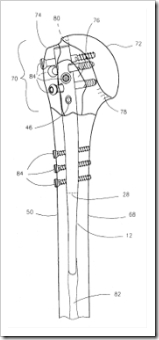
Acumed and Stryker have been battling for years over patented orthopedic surgery equipment. The original suit ended with a final judgment in April 2006 for Acumed. This second suit, filed in May 2006, alleges that one of Stryker’s new orthopedic nails infringes the patent. The new version (named T2) was developed and put on the market during the original litigation, and Acumed deliberately chose not to include allegations against that product for fear of delaying the first trial.
The Oregon federal district court dismissed Acumed’s second lawsuit – finding the claim precluded by the prior judgment on the merits.
On appeal, Acumed successfully argued that its second infringement action is not precluded by the first action even though (1) the original action was concluded by a final judgment on the merits; (2) the parties and patents of the second suit are identical to those of the original suit; and (3) Acumed was in a position to assert infringement against T2 in the original suit but consciously chose not to pursue an infringement claim against T2.
Claim Preclusion: Following a final judgment on the merits, claim preclusion binds parties from re-litigating the merits presented and also from raising “any other admissible matter which might have been offered” on the merits. Although the particular elements of claim preclusion may vary, the Ninth Circuit finds preclusion only when the original litigation was terminated by a final judgment on the merits and second action has the same parties or privies as the original and the same claim or cause of action.
Taking a narrow view of “same claim or cause of action” – the Federal Circuit held that in patent law, claim preclusion can only be found where the accused products in the two actions are “essentially the same.”
‘[C]laim preclusion does not apply unless the accused device in the action before the court is “essentially the same” as the accused device in a prior action between the parties that was resolved by a judgment on the merits… Accused devices are “essentially the same” where the differences between them are merely “colorable” or “unrelated to the limitations in the claim of the patent.”…Finally, the party asserting claim preclusion has the burden of showing that the accused devices are essentially the same.’
In its opinion, the court rejected a “could have” defense — instead holding that “claim preclusion does not bar a claim merely because it could have been raised in a prior action between the parties that was resolved by a final judgment on the merits.” Along this same line, a patentee therefore does not lose rights by filing suit against only some of an accused infringer’s products (because “two claims for patent infringement do not arise from the same transactional facts unless the accused devices in each claim are ‘essentially the same’”).
Stryker admitted that the T2 was not essentially the same as its prior product — thus eliminating any possibility of claim preclusion. Stryker’s admission is the result of a tough litigation decision. To win on claim preclusion, it must argue that the new product is the same as the old product. However, if it did not win on claim preclusion, that argument would place the defendant’s non-infringement argument in serious peril.
Notes:
- As the court noted, claim preclusion refers to a legal action rather than a patent claim.
- 2006 Acumed appeal on claim construction
Patently-O Bits and Bytes No. 33: Supreme Court
- Patentable Signals at the Supreme Court: In Nuijten, the CAFC held that transitory propagating signals are not patentable subject matter because they do not fit within any of the four statutory invention categories of “process, machine, manufacture, or composition of matter.” Now, Nuijten has petitioned the Supreme Court for certiorari in a case captioned Nuijten v. Dudas. The petition focuses on the CAFC’s decision that arguably requires patentable inventions be (1) tangible; (2) non-transitory; and (3) measurable without “special equipment.” [Petition][About Nuijten]
- Design Patents at the Supreme Court: In Calmar v. Arminak, the design patent holder is asking the Supreme Court to reverse the Federal Circuit’s narrow infringement analysis. ISDA has filed an amicus brief arguing that the CAFC’s application of the “ordinary observer” test improperly excludes the most natural ordinary observer – a retail customer. [Brief][About Calmer]
- These two pending Supreme Court petitions are both important and well argued. The fact that they are well presented also makes it more likely that the follow–on cases of Bilski and Egyptian Goddess will receive attention from the Supreme Court.
RIM v. NTP Continues to Trouble Patent Office
Although NTP v. RIM settled years ago, the PTO’s reexamination of NTP’s patents have continued to plod along. 
During ex parte reexaminatoin, third-party communications are strictly forbidden. It is clear, however, that in the months leading up to the NTP settlement, the PTO was feeling a tremendous amount of political pressure from RIM as well as Congress and the Senate.
Now, Congressman Howard Berman has demanded information from the PTO regarding these meetings “hand-delivered” by “May 19, 2008.”
“Did this meeting [with Balsillie and counsel] take place? What was discussed at this meeting? What is the USPTO’s policy concerning ex parte communications between senior USPTO officials and parties who have an interest in the outcome of proceedings before the office? In what other instances, if any, did senior USPTO officials engage in similar ex parte communications with parties that had an interest in the outcome of a proceeding being conducted before the Office?”
Hopefully the Office will be able to provide Chairman Berman with a tidy set of evidence to clarify the rules and exactly what happened.
Documents:
- NTP’s Allegations (8 MB) Check out pp 74+ and also pp 61 – 74.
- Time Article by Daren Fonda.
- Thanks to Hal Wegner and Greg Aharonian for the tip.
US Court Refuses to Stay Pending Outcome of Parallel Canadian Inventorship Litigation
Wyeth v. Dr. Wolfe, 08-0754 (E.D.Pa. May 8, 2008)
Dr. Wolfe holds a patent on a low dose progesterone therapy. Wolfe and Wyeth worked together for several years to bring Wolfe’s product to market. Later, Wyeth filed at least one similar patent application without listing Wolfe as an inventor. As a Canadian, Wolfe filed suit in Canada requesting that he be listed as the inventor and also requesting compensation for breach of contract, etc.
Wyeth then filed a declaratory judgment action in the Eastern District of Pennsylvania.
On May 8, the court denied Wolfe’s motion to stay the later-filed US proceedings. Without going into the merits of the stay or any patent specific law, the court looked to its own precedent holding refusing to stay where the foreign litigation is still “in its incipiency.”
“Here, the Canadian actions are not far enough along in the process to warrant a stay in this Court. In the case filed in the Ontario Superior Court of Justice, there is a pending Motion to Dismiss, which that Court will not rule on until June 25, 2008. Similarly, the case filed in the Federal Court of Canada is also in its beginning stages. While some evidence has been submitted on the matter, the case has not yet been scheduled for hearing. Thus, it is unlikely that either Canadian case will soon be resolved. Staying the proceedings in this Court would, therefore, only serve to delay the progress of this action. As such, the Court finds that a stay in this Court is inappropriate at this time.”
Parallel US & foreign patent litigation is an increasingly common occurrence. In addition to the cost, these cases raise important issues of inconsistent application of laws.
CAFC Hears En Banc Bilski Case
May 8th’s en banc oral arguments in Ex parte Bilski reveal a court clearly grappling with the difficult problem of defining the scope of patentable subject matter in a way that is both administratively workable and supportive of future innovation and technology surges. The Federal Circuit’s leeway is limited by Supreme Court precedent. The en banc panel notably focused on Diamond v. Diehr, 450 U.S. 175 (1981), and the meaning of “transformation.”
Hitting upon an argument found in several amici briefs, the court questioned whether the statutory limits of Section 101 are necessary at all — given the administrability of Sections 102, 103 and 112. No counsel presented clear “harms” of an overbroad interpretation of a statutory “process.” (The potential issues were best described in Prof Sarnoff’s brief.)
Notes:
- Listen to the oral argument in the en banc hearing of In re Bilski here for Part One and here for Part Two.
- Economist.com
- Quinn
Tea leaves (FWIW):
- PTO’s decision will be affirmed by shaping the facts (e.g., by calling the invention an abstract idea).
- State Street will not be overruled.
- The court will not implement a “machine test.”
Tafas v. Dudas: PTO Announces its Intent to Appeal
The Patent Office has filed a notice of appeal in the case of Tafas v. Dudas. This case involves the PTO’s attempt to limit the number of continuation applications and the number of claims per patent that may be filed based on an original disclosure. In April, 2008, District Court Judge Cacheris granted plaintiffs motions for summary judgment — finding that the new rules are an improper extension of the PTO’s statutory authority.
“Because the USPTO’s rulemaking authority under 35 U.S.C. § 2(b)(2) does not extend to substantive rules, and because the Final Rules are substantive in nature, the Court finds that the Final Rules are void as ‘otherwise not in accordance with law’ and ‘in excess of statutory jurisdiction [and] authority.’ 5 U.S.C. § 706(2).”
The appeal will be heard by the Court of Appeals for the Federal Circuit. The basis of the original declaratory judgment action is that the PTO’s proposed rules violate the PTO’s limited rulemaking authority granted by 35 U.S.C. § 2(b). Thus, there is no question that this case arises under the Patent Act and, consequently, that the Federal Circuit has exclusive jurisdiction on appeal.
Notes:
John McCain and Patents
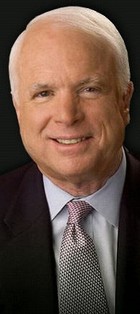
Members include Ed Reines who is president of the Federal Circuit Bar Association and a senior partner at Weil Gotshal; Professor John Duffy who will be arguing later this week in the en banc Bilski case; Professor Michael Abramowicz who has written several articles about patent law and most recently proposed an auction system for extending patent terms; and Professor Eugene Volokh of the Volokh conspiracy. Chuck Fish, former Chief Patent Counsel at Time Warner, is apparently working full-time for the campaign.
This is a very strong group that tends to provide solid, practical advice. I speak with some experience – having received advice from each of these members about various aspects of the law.*
Notes:
- * Prof Volokh’s advice came from his book.
Canons of Claim Construction: Cancelled Claims Narrows Construction for Asserted Claims
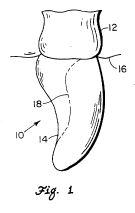
PSN’s patent claims a method of making porcelain veneers. PSN sued fourteen companies for infringement, most of whom settled early. The remaining defendants successfully argued that their veneer process was non-infringing.
On appeal, the CAFC looked at claim construction. In a passing breath, the court made the distinction that Phillips applies to “undefined” claim terms:
“We determine the ordinary and customary meaning of undefined claim terms as understood by a person of ordinary skill in the art at the time of the invention, using the methodology in Phillips v. AWH Corp., 415 F.3d 1303, 1312-19 (Fed. Cir. 2005) (en banc).”
Here, the court needed to determine the meaning of the undefined term “ready for mounting.” Relying upon the patentee’s use of the word ‘MAY’ in describing the claimed process, the CAFC held that the term should be rather broadly construed to optionally include ‘finishing’ steps. (Specification: “While still on the statue, the veneer casing may be subject to a finishing treatment to improve the esthetics.”)
The appellate panel noted that, within reason, claims should normally be construed to cover the described embodiments. The panel cautioned however, that each claim does not necessarily cover each embodiment. To the contrary, in some cases unasserted or cancelled claims directed to a particular disclosed embodiment may actually serve as evidence that the scope of remaining asserted claims does not extend to that embodiment.
“[C]ourts must recognize that disclosed embodiments may be within the scope of other allowed but unasserted claims. Likewise, during prosecution, an applicant may have cancelled pending claims but not amended the specification to delete disclosure relevant only to the cancelled claims. In such cases, unasserted or cancelled claims may provide ‘probative evidence’ that an embodiment is not within the scope of an asserted claim.”
Here, although the CAFC reversed on claim construction, it still found that summary judgment of non-infringement was proper.
Patently-O Bits and Bytes No. 32: Patent Law Jobs
IP for Wireless & New Media: The World Research Group (WRG) is hosting its The 2nd Annual Summit on Intellectual Property for Wireless Tech & New Media — June 17–18 in San Francisco. It appears to be a great conference both for networking and for learning about IP strategy & IP practice. The conference is expensive, but we have a $300 discount for Patently-O readers (Code: SMS775). www.worldrg.com/ip. WRG has become a “Media Partner” with Patently-O Jobs.
- Recent Patent Law Jobs:
- Patent Agent – Large Corporation – Dublin, Calif.
- Patent Counsel – Johns Hopkins University – Baltimore, Md.
- Patent Agent/IP Technical Specialist – Law Firm – Irvine, Calif.
- Business Method Patent Attorney/Student – Remote
- Patent Attorney – Law Firm – Austin, Texas
- Paralegal – Law Firm – Seattle, Wash.
- Patent Attorney/Agent – Law Firm – Tysons Corner, Va.
- Patent Attorney/Agent – Law Firm – Seattle, Wash.
- Patent Counsel – Large Corporation – San Diego, Calif.
- Chemistry Patent Attorney/Agent – Small Corporation – San Francisco, Calif.
Purchasing Canadian Drugs & Patent Infringement
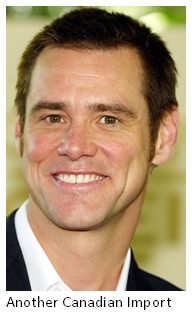
One astute Patently-O comment by patent attorney Paul Morgan queried whether Litecubes could open the door to patent infringement litigation against Canadian pharmacies who sell to US customers who cross the border to purchase cheaper drugs. There are some strong parallels between Litecubes and the pharmacy example that should give some reason to believe that such a lawsuit has some merit — especially if Canadian drug sellers knew they were selling to US nationals for transport back to the US. However, direct infringement would be a stretch from the facts of Litecubes:
“Since the American customers were in the United States when they contracted for the accused cubes, and the products were delivered directly to the United States, under North American Philips and MEMC there is substantial evidence to support the jury’s conclusion that GlowProducts sold the accused cubes within the United States.”
Litecubes focused on the issue of direct infringement. Canadian sellers might alternatively be liable as indirect infringers under theories of inducement and/or contributory infringement.
Some have suggested that the a patentee should not be allowed to block importation of drugs that the patentee sold abroad. I.e., if Pfizer sells Lipitor in Canada at a low price, the patentee should not be allowed to control the downstream free market — even if the result is US imports that undercut the company’s US price. In patent lingo, this follows the theory of patent exhaustion. However, US Courts have made clear that a patentees foreign sales do not exhaust its US patent rights.*
This type of case may never come to pass. However, that result may be more due to politics and difficulties in detection and enforcement rather than a lack of a strong legal case.
Notes:
- Patent Exhaustion is currently being considered by the Supreme Court in a case titled Quanta v. LGE.
- * Jazz Photo v. ITC, 264 F.3d 1094 (Fed. Cir. 2001), cert. denied, 536 U.S. 950 (2002)(“United States patent rights are not exhausted by products of foreign provenance. To invoke the protection of the first sale doctrine, the authorized first sale must have occurred under the United States patent.”).
Forging A Patent Document
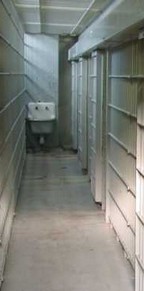
“Whoever falsely makes, forges, counterfeits, or alters any letters patent granted or purporting to have been granted by the President of the United States; or Whoever passes, utters, or publishes, or attempts to pass, utter, or publish as genuine, any such letters patent, knowing the same to be forged, counterfeited or falsely altered–
The punishment is “not more than ten years” of federal prison. I was unable to find any reported decisions that apply or even interpret Section 497. Unlike the marking statute, there is no provision that would allow a private action against under this statute.
A general fraud claim would create standing for a civil action. However, the plaintiff would need to show particular harm — unlike a Section 292 plaintiff.
Patently-O Bits and Bytes No. 31
In re Volkswagen(5th Cir. en banc). A self-titled “ad hoc committee of intellectual property trial lawyers in the Eastern District of Texas” have filed a brief in the pending VW case arguing on the substance that the E.D.Tex. courts do not excessively retain cases in a way that is any different from other jurisdictions. The AIPLA amicus brief in the same case argues that too many cases are being heard in Texas. [Trial Lawyer Brief] [More Info].
- The non-profit IP Hall of Fame is asking for nominations for inductees in the 2008 IP Hall of Fame. The award is designed to honor individuals who have made significant contributions to today’s Intellectual Property System. www.iphalloffame.com. The award will be limited to five inductees this year. A couple of notes: (1) The Hall of Fame is non-profit, but sponsored by the for-profit IAM-Magazine. (2) I am a member of the Hall of Fame Academy and will vote on the inductees. (Being on the academy is different from being an inductee).
- John Doll (Commissioner for Patents) will be taking questions on May 13 (11:00 am CST) as part of a webinar sponsored by Kirkpatrick & Lockhart. It appears that you must pre-register for this FREE event. LINK.
- While much of the proposed patent reform legislation has been directed toward easing pain felt by major corporations being sued for patent infringement, one proposed measure would move inequitable conduct issues to the PTO for a decision. NY Times discussed this last week as a battle between Innovator and Generic Pharma – with the lobbyists winning. [LINK]
- USPTO Publishes Common Application Format for EPO and JPO [Via IP/Updates]
- Pfizer’s Lipitor ‘893 Patent Survives Reexamination [Via Patent Docs]
CAFC Rejects Patent on Invention to Overcome the Second Law of Thermodynamics
In re Speas (Fed. Cir. 2008)
In a short non-precedential opinion, the CAFC affirmed the PTO’s rejection of Speas patent application as both non-enabled and lacking utility. The application claims:
“all devices and systems which operate in such a manner as to violate the second law of thermodynamics as it is currently understood.”
The CAFC briefly described operation of an embodiment:
‘According to the specification, the invention raises a ferrofluid out of a reservoir by a magnetic column into a mass. The ferrofluid then escapes a “gradually decreasing magnetic field which holds it up against gravitational force” and is drawn away via tubular element by a capillary force aided by Brownian motion. At the end of the tubular element, drops of this ferrofluid accumulate and drop back into the reservoir below, spinning a wheel along their downward paths. Thus, the movement of the ferrofluid imparts mechanical energy upon the wheel. Speas claims that because this ferrofluid is moved and adds energy to the paddle wheel “without input into the system other than ambient thermal energy,” it is proof that the second law of thermodynamics is not inviolate – an object of the invention.’
Notes:
- Although this type of case is fun to read, it also provides an interesting lesson — that the patent office has tools to reject inadequate patent applications on their merits without resorting to broad exclusions of particular subject matter.
- Speas is the inventor of several issued patents covering more practical applications such as an internal combustion engine and an adjustable bicycle drive mechanism. His home of record is in the town of Haiku on the island of Maui.
False Marking

Although marking serve as a benefit, the patentee must also be wary of statutory false marking. Under 35 U.S.C. 292, false marking includes marking unpatented product as “patented” or marking a product as “patent pending” when no patent is pending. These false marking activities are only actionable if done “for the purpose of deceiving the public.”
Section 292 is a criminal provision with only a monetary penalty – usually payable to the government. The statute also spells out a qui tam right for “any person” to sue for false marking. One-half of any damages would then be awarded to the civil plaintiff, and the US Government collects the other half. Damages are limited to “not more than $500 for every such offense.” Some courts* appear to interpret “every such offense” broadly. Thus, for example, 100,000 mislabeled cups, would be seen as 100,000 offenses. The text from Section 292 has remained remarkably fixed since the Patent Act of 1870 the primary differences being that the old statute included a minimum penalty of $100 per offense and used the word “moiety” instead of “one-half.”
Recently, a Washington DC patent attorney, Matthew Pequignot, filed at least two Section 292 lawsuits in the Eastern District of Virginia alleging false marking. These include Pequignot v. Solo Cup and Pequignot v. Gillette and P&G.
In the first case, Pequignot alleged that Solo Cup marks its paper products with patents that had expired more than ten years ago. In a motion to dismiss, Solo Cup argued that marking with an expired patent cannot be considered false marking. Furthermore, the defendant argued, it should not be held liable because the markings were written in the tentative voice: indicating that the products “may be covered” by various patents.
Holding: Judge Brinkema denied Solo Cup’s motion to dismiss, holding: (1) that, as a matter of law, listing of expired patents may constitute false marking; and (2) the use of permissive language (“may be covered”) in the marking does not create a safe harbor against liability for patent marking. In his Treatise, Don Chisum addresses this point — finding “little authority on whether continued use of a patent number of an article after expiration of the patent constitutes culpable mismarking.”
The complaint against Gillette and P&G similarly lists over thirty products being marked by those companies with expired patents or patents that do not cover the marked product.
Documents:
- File Attachment: Pequignot v. Solo Cup Decision (2667 KB)
- File Attachment: Pequignot v. Gillette Complaint (376 KB)
- Section 287(a) reads as follows: “In the event of failure so to mark, no damages shall be recovered by the patentee in any action for infringement, except on proof that the infringer was notified of the infringement and continued to infringe thereafter, in which event damages may be recovered only for infringement occurring after such notice.”
- * Updated to add my own permissive language of “some” courts.

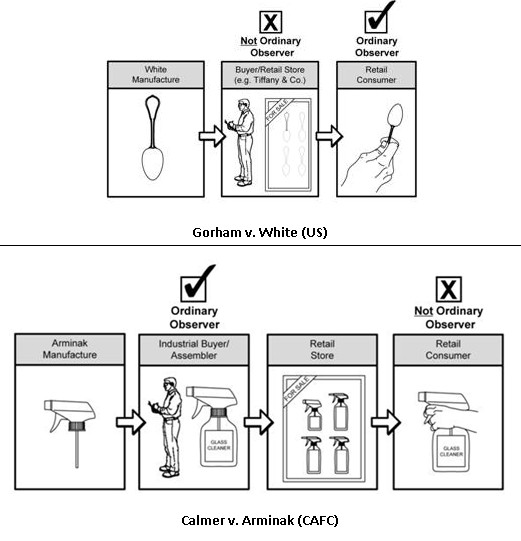

 IP for Wireless & New Media: The World Research Group (WRG) is hosting its The 2nd Annual Summit on Intellectual Property for Wireless Tech & New Media — June 17–18 in San Francisco. It appears to be a great conference both for networking and for learning about IP strategy & IP practice. The conference is expensive, but we have a $300 discount for Patently-O readers (Code: SMS775).
IP for Wireless & New Media: The World Research Group (WRG) is hosting its The 2nd Annual Summit on Intellectual Property for Wireless Tech & New Media — June 17–18 in San Francisco. It appears to be a great conference both for networking and for learning about IP strategy & IP practice. The conference is expensive, but we have a $300 discount for Patently-O readers (Code: SMS775).  In re Volkswagen(5th Cir. en banc). A self-titled “ad hoc committee of intellectual property trial lawyers in the Eastern District of Texas” have filed a brief in the pending VW case arguing on the substance that the E.D.Tex. courts do not excessively retain cases in a way that is any different from other jurisdictions. The AIPLA amicus brief in the same case argues that too many cases are being heard in Texas. [
In re Volkswagen(5th Cir. en banc). A self-titled “ad hoc committee of intellectual property trial lawyers in the Eastern District of Texas” have filed a brief in the pending VW case arguing on the substance that the E.D.Tex. courts do not excessively retain cases in a way that is any different from other jurisdictions. The AIPLA amicus brief in the same case argues that too many cases are being heard in Texas. [